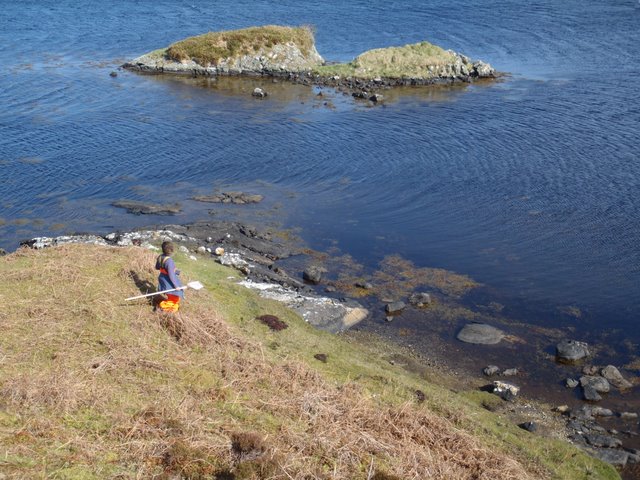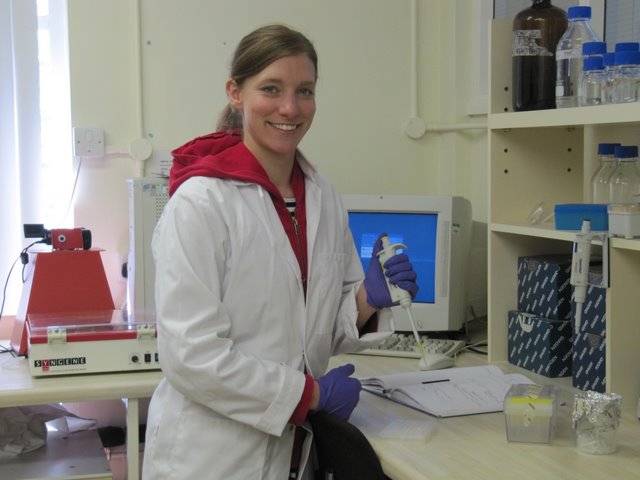So here I am one month away to finishing my 15 month apprenticeship. What can be said of this adventure into the world of marine molluscs? Well first of all a big thanks has to go out to BTCV. Thank you!!!! To the funders all I can say is that it is extremely worth it. Taxonomy is a dying skill that in layman’s terms is the equivalent to biology as counting is to mathematics. The apprenticeship scheme is such an amazing opportunity for so many of us lucky enough to take part in it.
I have learned so much and have had such an amazing time with various professionals in the field. As someone who is a bit quieter then most meeting new people was a bit nerve racking for me. However, after travelling to various places and working with various mentors I quickly learned that many are just passionate to share their knowledge and quick to take me under their wing. It was the most knowledgeable that were the kindest. It all began with a placement to Northern Ireland to work with Dr. Julia Nunn at the Ulster Museum NI. She is a marine gastropod (snail) guru. She took me out on some of the most beautiful shores to search for molluscs. What a privilege! I can’t begin to describe just how amazing these sights were and how amazing it was to see so many molluscs that I could never have imagined existed (I’m from Ontario Canada where the sea is a close as John O’ grouts is to Plymouth). I was blown away and inspired at not only by Julia’s knowledge of molluscs but her energy and enthusiasm. This is a time in my life I’m sure I will never forget.
My second placement was at the National Museum Cardiff to study bivalves. This was another eye opener. The entire molluscan department made up of Dr. Graham Oliver, Anna Holmes, Dr. Ben Rowson, Harriot Wood, and Jen Gallichon was quite possibly the friendliest and most knowledgeable group of individuals I have ever met. I learned that to be knowledgeable and extremely good at your job doesn’t mean you have to be cocky and arrogant. Despite being extremely busy people they had nothing but time for me. Ben was of great help assisting me with my on going hydrobiid snail project as was Graham and Anna. Anna and Graham, not only taught me about bivalves “the proper scientific way” i.e. understanding not just memorizing species, they taught me a dedication and love of the things (bivalves) you study. It was through both study and hands on work, for me curating a bivalve collection that I really started to click with bivalves. They are so diverse and numerous you can’t know everything but you can try and it is these challenges that make it all work it. The quest for knowledge!
My practical survey work with Christine Howson and Jon Moore (Aquatic Survey and Monitoring Ltd.) in Peterhead was a great real life survey experience. Things are handled a bit differently with serious project deadlines. Time is of the essence and you do what it takes to get the job done. My most memorable experience of this was sifting sand (for small invertebrates) in the rain and dark with the tide coming in. …My goodness did my biceps hurt after that! Ouch!
Lastly, my time with National Museums Scotland. This was my primary placement. Here I learned about museum collections and the importance of having complete data. I guess the take home message would be that a specimen is nothing without its data so be sure it’s complete! Spending time in the pickling factory as one employee called it (specimens stored in spirit) was a fantastic opportunity to understand not just what specimens look like but evolution and how they fit into a taxonomic tree. It was also here that the bulk of my on going taxonomic hydrobiid project began which followed me throughout my various placements (Ulster Museum and National Museum Cardiff). As you know I have been trying to determine if Scotland has a rare brackish water snail Hydrobia acuta neglecta. Identification of this species from closely related species Peringia ulvae and Ventrosia ventrosa has been a taxonomic nightmare for the past 20 years. Perhaps I’ll have to crack this after my apprenticeship. Part of this project involved travelling out to the Outer Hebrides to the Island of North Uist. Breathtaking! Here the curator of mollusca at NMS, Sankurie Pye, and I went to collect hydrobiids.

We had an intense but amazing 4 days of mostly sunshine to walk through the heather, scale down rock faces, leap over bogs (not clearing them all the time Sankurie ☺ ) to gather our specimens. After some intense microscope work on my part and later genetic work (yes we’re talking serious science here DNA extractions, PCR, etc) at Heriot-Watt University, under the guidance of the extremely helpful Dr. Joanne Porter more information can now be added to the pot. Thanks to my mentor here at NMS, Susan Chambers, for being a great sounding board regarding the hydrobiid project and assisting in its development.

So as you can see in this glimpse of what I’ve done over the past 15 months it has been an adventure in molluscs that has not only provided myself with knowledge but will have led to the spread of knowledge with the completion of my hydrobia report and later a joint publication with National Museum Scotland (NMS). Again, a big thank you to BTCV and all of my placements for making my apprenticeship possible.
The End.
